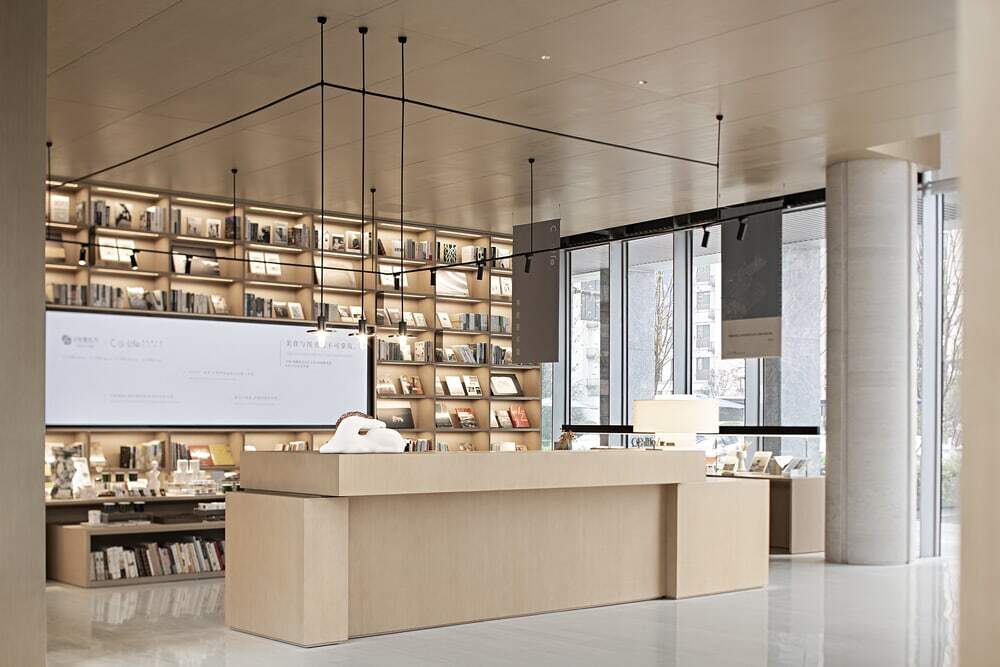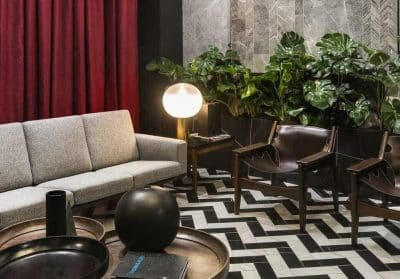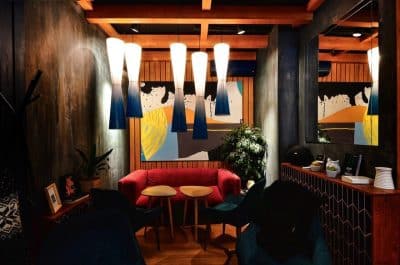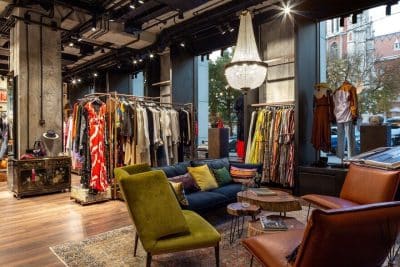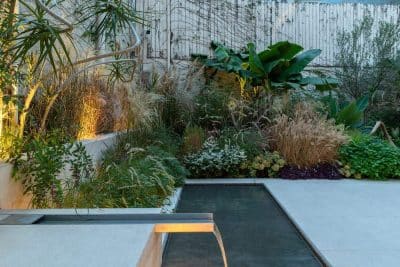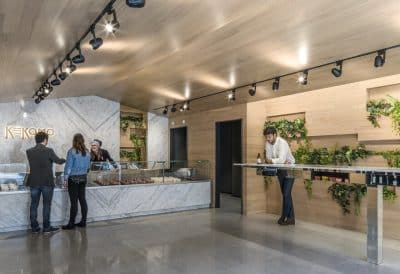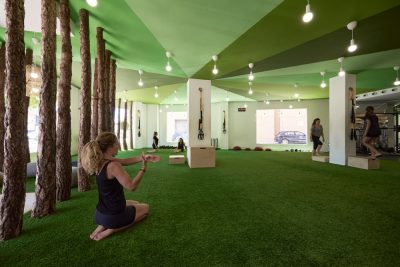Project name: Hangzhou Vanke • Qiantang Oriental CO-Life Experience Center
Interior design: ONE-CU Interior Design Lab
Decoration design: ONE-CU Interior Design Labs
Location: Hangzhou, China
Area: 850 m2
Completion time: September 2020
Main materials: stone board, wooden veneer
Photos: Interpretation Sublimation
Special thanks to: Hangzhou Vanke
Experience-Centered, Customer Demands-Oriented
The internet has been driving the rapid evolution of consumption scenes and updating our perception of ideal life.
As a kind of consumption space, conventional property sales centers can no longer satisfy the demands of consumers. Updating services and experiences to make sales center look less like “sales centers” has become a trend recently.
Different from conventional sales center which is only targeted at property buyers and serves selling activities, new sales center embraces both buyers and non-buyers and functions as a public community space. It conveys brand identity, highlights living experience, and interacts with users to gain feedback to figure out new ideas for community space operation.
An Innovative Experiential Model that Integrates Multiple Scenes
However, how to let sales centers better serve people, provide more possibilities for socializing and create a sense of belonging within the community?
Based on the question, ONE-CU Interior Design Lab conceived a novel sales center for the residential development Vanke • Qiantang Oriental in Hangzhou, China. Taking into consideration the developer’s user-centric and community-centered operation concept, as well as users’ differentiated demands, the design team worked out an experiential model that integrates scenes based on four different themes: coffee, books, food and art creation. The project sets an innovative example for urban community space and operation, and realizes the upgrade from scenes to a venue.
From Scenes to Venue
As a public and commercial space, contemporary sales center needs to showcase unique character, and more importantly, to provide future users with a spiritual venue that blends into the surrounding environment and atmosphere.
Based on analysis of user behaviors under the model and the demands of community construction, ONE-CU team incorporated multiple scenes into the space, explored the interfaces between spatial scenes, and identified the design strategies: integrating community scenes, stimulating interaction and upgrading scenes into a venue.
Scenes are functional existence, which provides experience and produces stories, while venue is a medium that is based on integration of functionality and behaviors and is capable of evoking emotions as well as close interaction among time, space, people and objects.
In addition to creating scenes in this public community space, it’s more important to combine scenes to build emotional connection via design approaches, so as to strengthen the feeling and the sense of belonging of different user groups, hence forming a genuine “venue”.
The building is the “entrance” that leads to this “venue”. Large French windows reveal the interior space and make it look like a street-facing store. The design team brought in several large and tall tree art installations, to create visual highlights and attract people to enter the space. Books are displayed in a way similar to that of bookstores, which can be seen through glass windows and invite passers-by to step in.
Tree art installations help bring people and space closer, eliminate the sense of uncertainty in the lofty space, and enhance the reading atmosphere with swaying shadows.
Upgraded Venue
Based on in-depth investigation of the site and user groups, the designers decided to create four major scenes themed on food, coffee, books and artistic creation, and at the same time added basic functional areas for display, negotiation and signing contract.
To closely integrate different scenes in one “venue”, the design team has to work out a reasonable functional layout and circulation route, deal with relations of interfaces between functional areas, and ensure the openness of space to enable continuation or shift of functions in the future if necessary.
Interpenetrating Scenes and Atmosphere
The first floor mainly accommodates three scenes themed on coffee, books and food, complemented by display and negotiation functional areas. The design breaks the stereotype of sales centers, and tries to guide user behaviors via spatial experiences. Various combinations of furniture are subtly arranged in the space, to trigger behaviors. Besides, scenes connect with and interpenetrate each other.
Reading is a key behavior and experience in the space. It can occur beside the window or anywhere within the space. People can grab a book and then sit under “trees”, stand beside bookshelf or sit on the floor to enjoy reading.
The negotiation area is given an enclosed layout to stimulate communication, and armchairs produce a relaxing, cozy atmosphere.
The open bar counter encourages interaction. Here people can make a cup of coffee by themselves, or share ideas of coffee with others.
Soften Interfaces and Connected Scenes
The design team adopted large bookshelves to replace walls, to form gentle interfaces. Those interfaces connect different functional areas on 1F and 2F, and separate yet link up spatial scenes, to attract visitors to explore and encounter the unexpected. Spatial experiences at different areas are different, but are closely connected.
Several openings are carved out on bookshelves, to enhance fluidity and transparency of the space, enrich viewing angles, evoke people’s curiosity and stimulate them to explore the space.
Passageways around bookshelves enrich the spatial layering and form a circulation loop, which further extends interaction in the space and enhances interpenetration between 1F and 2F. As people move in the space, the relationship between people, people and space become closer.
Open and Inclusive Space
To echo the theme “book”, the tree-like art installations are made of special handmade paper. Other materials utilized in the space also feature plain textures. Wooden veneers are applied to partitions and bookshelves, with the natural wood hue adding a warm and intimate ambience to the space. The floors are covered with austere beige stone boards. The pure and plain textures of materials greatly enhance the inclusiveness of the space.
Light casts shadows on walls and creates a sense of rhythm, which creates a unique backdrop scene in the space, weakens the boundary between interior and outside and increases the smoothness of the circulation route.
As a novel venue catering for modern urban life, Hangzhou Vanke • Qiantang Oriental CO-Life Experience Center aims to enhance emotional connection within the community, and provide more professional services, add more possibilities to life, and build close connection between the developer and the community.














